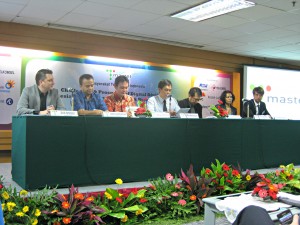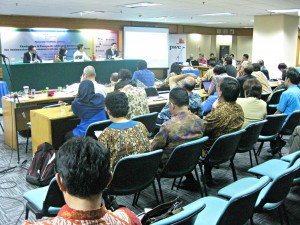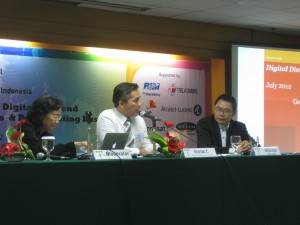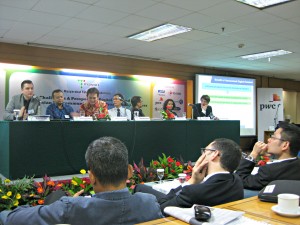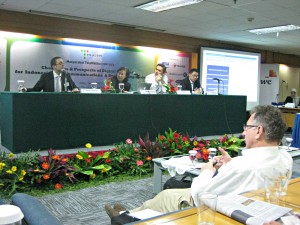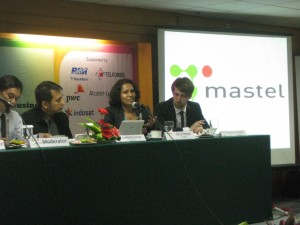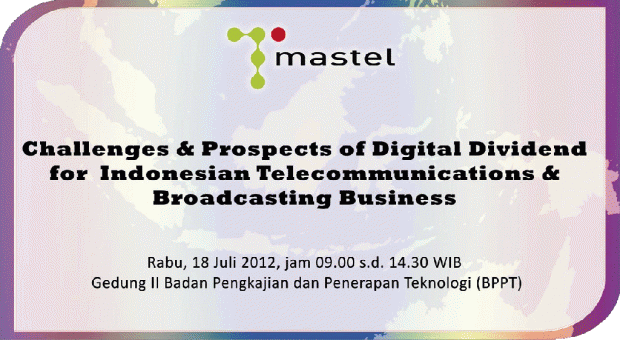

The digital dividend arises from the switch from over-the-air (OTA) analogue to digital terrestrial TV (DTT).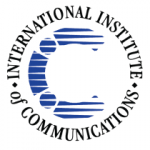

Most of the bandwidth savings arise in the UHF band and in many cases substantially more than 100 MHz will be released. The most likely primary reallocation of this spectrum is for 4G broadband wireless services, but this requires a harmonized approach across economies in the region. How difficult will that be, and when might it take place?
Many countries have legacy problems but the minimum requirement for progress is action to avoid cross-border radio interference and domestic interference with TV broadcasts.
This is one area in which Asia is lagging behind the US and Europe where the switchover has already happened or is well under way. Different DTT standards are being adopted. The US uses ATSC, Europe DVB-T/DVB-T2, Japan ISBD. ASEAN is still looking at 2015~2020 for the ASO (analogue switch-off) and along with the ABU is advocating a common DVB-T2 standard and even an ASEAN STB; but different standards are being adopted in China, Laos, Hong Kong, Macau, Korea and Japan, and possibly the Philippines. How will this affect the development of commercial broadcasting and the future distribution of content in the region?
“White spaces’ are the unused or under-used frequencies mostly in the bands used by TV. TV Band Devices (TVBDs) can be used to check a database or use cognitive radio to identify others users and avoid interference on those channels. Applications range from M2M sensors for telemetry for smart cities to neighbourhood broadband WiFi. The Singapore White Spaces Pilot Group (SWSPG) is preparing for commercial trials.
The digital dividend is potentially the most radical re-use of spectrum for a generation. ASO remains some years off, but commercial developments in white spaces may not take quite so long. The forum will seek answers to these and other issues in its familiar roundtable format. Chatham House rules apply.
Times, Venues and Locations
IIC Asia Forum in Jakarta, 18 Jul 2012 @ Mastel Office, Ruang Komisi Utama Lt. 3 Gedung II Badan Pengkajian dan Pernerapan Teknologi (BPPT), Jl. M.H. Thamrin No. 8, Jakarta 10340, Indonesia [brochure]
IIC Asia Forum in Jakarta
18 Jul 2012 @ Mastel Office, Ruang Komisi Utama Lt. 3 Gedung II Badan Pengkajian dan Pernerapan Teknologi (BPPT), Jl. M.H. Thamrin No. 8, Jakarta 10340, Indonesia
SPEAKERS
- Dr. Setyanto P. Santosa, Chairman of MASTEL
- Dr. John Ure, Director, TRPC
- Dr. Muhammad Budi Setiawan, Director General for Resources & Equipment of Post and Telecommunication, MCIT
Session 1 “Digital Dividend (Status and Issues); Challenges & Opportunities”
Moderator: Mr. Kanaka Hidayat
- Directorat for Spectrum Management, MCIT,Mr. Denny Setiawan, ST., MT.
- President Director, PT Telekomunikasi Selular,Mr. Alex Janangkih Sinaga
- Mr. Erik Aas, President Director, PT Axis Telekom Indonesia
- Country Senior Officer, PT Alcatel-Lucent Indonesia,Mr. Frederic Chapelard
- GSM Association,Ms. Chris Perera
- Corporate Secretary, PT Surya Citra Televisi (SCTV), Mr. Hardijanto Saroso
Session 2 “After Digital Migration; What Next? How Indonesia can Get the Most Benefit?”
Moderator: Ms. Koesmarihati, Board of Profession and Association of MASTEL
- Mr. David Abecassis, Senior Manager, Analysysmason
- Mr. Jeffrey Yan, Microsoft International, Beijing Director
- Mr. George Pramadono, Director, Price Waterhouse Coopers
EVENT SUMMARY
Jakarta 18th July 2012
Well over 100 participants took part in this forum hosted by Mastel in partnership with TRPC. Opening remarks were made by Dr Setyanto (Chm Mastel), Dr John Ure (TRPC) and Dr Muhammad Budi Setiawan, Director-General of Resource Management and Equipment Standard of Posts and IT.
Panel One
Denny Setiawan (Director for Spectrum Allocation and Planning of Fixed and Mobile Services, Ministry of Communications and IT), Erik Meijer (Indosat), Ivan C. Permana (Telkomsel), Hardijanto Sarose (SCTV), Chris Perera (GSMA) and Guillame Mascot (Alcatel-Lucent)
DSO is targeted for 2103 and ASO for 2018, but before this can happen major issues have to be decided. Notably the deployment and pricing of STBs, whether telcos and broadcasters have or have not a common interest in the STBs, decisions as to how to phase in DTT (e.g. by region or nationally), how to licence multiplexing, how to ensure open access, how to cover the transitional costs of broadcasters in simulcasting, how much spectrum to allot to new entrants or to save for future requirements, how to spread access to and usage of broadband for alternative delivery systems and for return-paths which will allow DTT operators to develop new interactive business models, etc.. There was a general acceptance that DSO and ASO was the inevitable way to go, but given the low income levels and heavy reliance on analogue FTA TV across Indonesia and the low penetration levels of broadband, the process was one that needed careful management and clarity of policy making.
Panel Two
David Abecassis (Senior Manager, Analysys Mason), Jeffrey Yan (Director, Technology Policy, Microsoft) and George Pramadono (PWC)
97% of Indonesians rely upon FTA TV and 50% are low-income so the challenge is big, but the cost of a digital STB is unlikely to be greater than the cost of a mobile handset and they currently sell very well. The advantages of the digital dividend to Indonesia would be greater than to Singapore because there was far more spectrum potentially available nationwide and because the opportunities to serve rural areas were immense. White space devices could also offer cost-effective ways for broadcasters to establish return-paths for users. There was some discussion as to whether spectrum auctions were always the best way forward, the point being made that using unlicensed spectrum offered more cost-effective ways for new entrants, local community initiatives and for broadcasters who could not afford high spectrum prices. The new business models for broadcasters included a shift of focus to marketing content over many different channels (the BBC model) and using white space frequencies for return path traffic (the SARFT approach in China to reduce reliance upon China Mobile and its charges).
This forum was an excellent session, raising all the important issues and in a way that recognized that these changes would happen, the question was how to manage them to the benefit of all the stakeholders.
Downloads
- Briefing Paper on the Digital Dividend 2012-07-17_IICAsiaForum_DigitalDividend_BriefingPaper

